A Farewell to Antequera
Olive Oil:
With olive trees as far as the eye can see in every direction it occurred to me – just how much olive oil does Spain produce? 50% of the world’s olive oil and over three times as much as Italy, Greece or Tunisia. That means that one out of every two bottles of oil sold in the world contains the Spanish product! There are more than 250 million olive trees throughout the country, Andalucía grows 75% of them – mainly in the Granada, Malaga and Cordoba regions – with Jaén considered the World’s capital. It’s doubtful harvesting is done the old fashioned way any more – beating the trees with sticks to loosen the fruit into waiting nets. Now they have machines which enfold the tree with something rather like an upside down umbrella and then pneumatically vibrate the fruit loose. Still labour-intensive though. I believe some places use low-flying helicopters to shake the trees.
Hidden Entrances:
Behind every stout, no-nonsense door (or cloth curtain) along every street, lies a hidden gem . . . beautifully tiled entry ways … each using a different colour and pattern. Some go for the plain and simple look with perhaps a potted plant or two … others are more elaborate or striking in appearance, often with ornate, wrought-iron gates leading into the house instead of just wood.
All doorways also have an indispensable heavy cloth curtain. First thing in the morning, the outer doors are opened, doorsteps are swept and washed, and curtains are pulled across – the perfect answer for both ventilation and privacy, while still having a friendly, approachable attitude should the neighbours want to stop by. Let me tell you, by the end of the first week I too was washing the front doorstep … I certainly didn’t want the local senoras tutting and rolling their eyes as they went past.
Starlings:
As dusk descends, flocks of Spotless Starlings gather to roost in the big, cloud-like pines around the square. The volume of sound is indescribable … a melodious symphony of whistles, flutes and trills … you can hear them as you drive by – with the windows up! I’d never even heard of Spotless Starlings before now, but like all starlings they are clever mimics and have a diverse repertoire. The city has wisely removed park benches from under the trees!
Iglesia del Carmen:
There are multiple churches and convents throughout Antequera, but the Church of Carmen is a particularly lovely one. Not much to look at on the outside … inside there are the usual niches decorated in gold, commemorating various saints, however it is the intricately carved nave and altar that are quite remarkable.
The Museum of the city of Antequera was a hidden gem. Spread over three floors it contained a staggering display of the history of the area — this stuff is truly UNESCO quality. Pottery, frescos, jewellry, paintings, grave sites. Completely unexpected.
La Comida:
Before leaving Antequera we knew we’d have to visit two places. One we had walked past so many times … Cafe Baraka . . . tables and chairs under the spreading shade of an unknown tree across the street. Food is dashed across from the kitchen by nimble-footed servers. We had a very civilized late lunch, watching the world go by . . . a dish of green olives and two small cervesas to start, followed by sizzlingly hot lagostinas (large prawns) in spicy olive oil with bread for dipping. Oh my!
Our last evening was saved for Meson Adarve (if you Google Meson Adarve, Antequera, and then click on the ‘menu’ there are photos of the food) … a family-run restaurant. Only a handful of tables, so reservations were a must. We stopped by that afternoon to inquire … there was an intake of breath and pursing of lips as Juan contemplated his phone and counted that night’s bookings. A pause, and then “Sí, una mesa para dos” … YES, we were in for 8:30.
We walked through the busy, lit streets for the last time … dodging scooters and stepping into doorways to avoid cars. There were no menus … all dishes were written on blackboards on the walls … verduras (vegetables), carnes (meats) and pescados (fish). We settled on a mango and prawn salad with Rabos de toro (oxtail stew) to follow. The local mangos are something special – perhaps it’s because they are allowed to ripen on the trees, or the flavour is different, whatever the case, these were exceptional … and in combination with the prawns, mix of greens and subtle dressing – this was a dish NOT to be missed. Then the Rabo … slowly cooked for hours till it was fall-off-the-bone tender in its own gravy … served with the traditional crisply golden potato chips. Thank goodness there was bread for mopping … it would be a sin to miss any of that sauce.
There was no room for dessert … not even a shared cheesecake … but the son brought us tiny glasses of chilled licor de limón as a digestif. Very pleasant. A message from the restaurant states that nothing is ultraprocessed or precooked – here you eat as God gave/provided.
For some glorious photos of places round Antequera do have a look at this site:
Guide To Antequera, Best Things To Do In The “Florence of Andalusia”
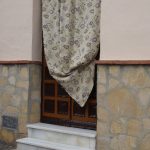
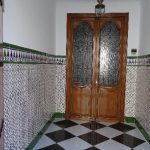
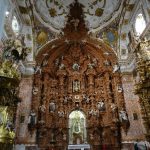



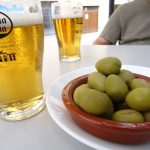
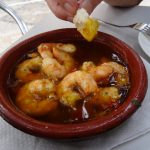
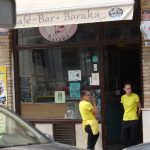
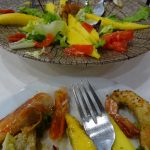

One Comment
Tim
Such salivatory pleasure to read your narratives.
I suspect you’ll be trying to recall and re-construct some of these epicurian delights when back in BC.
Come to think of it, there isn’t a Spanish restaurant in Duncan! A whole new chapter beckons!
Seriously wonderful accounts. Thank you.
Y ahora – a la oeste!, … Sevilla, Cadiz, Jerez, y Gibraltar! I hope you stop at a bodega!
Hasta la proxima……..